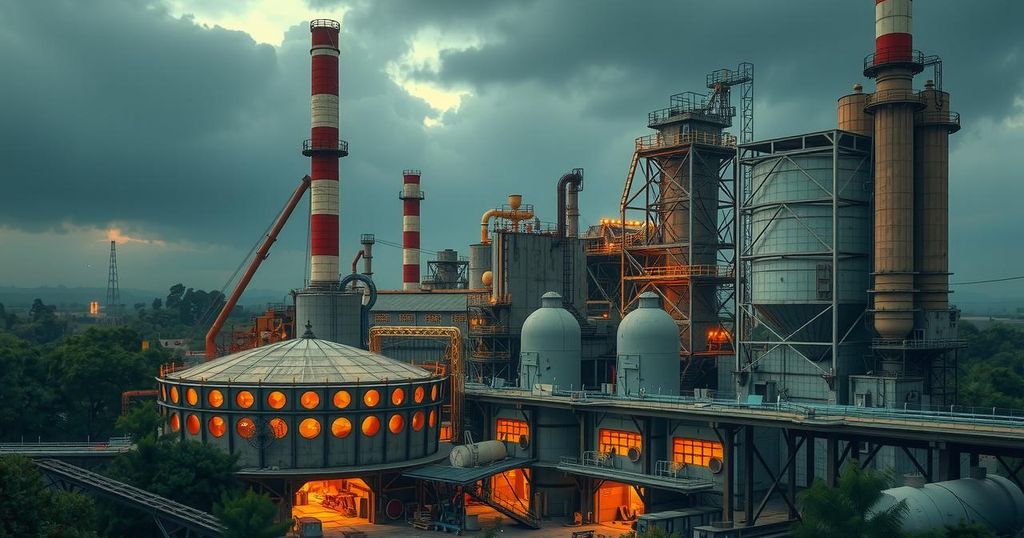The Impacts of Global Tensions and Climate Crisis on Nepal’s Future
Summary
As global tensions escalate, Nepal faces severe ramifications, including potential reductions in foreign aid vital for development. Climate crises further threaten food security and health, with increased air pollution leading to rising mortality rates. Experts warn that without intervention, Nepal’s socio-economic progress may regress due to heightened international financial fragmentation and domestic challenges.
Global tensions are escalating, raising urgent concerns regarding their potential repercussions on Nepal’s future. Experts caution that these geopolitical conflicts could significantly impair Nepal’s access to foreign aid, crucial for its development. Alongside this geopolitical turmoil, the climate crisis looms large, threatening to disrupt food security and economic stability for the Nepali populace. During the Horizons Dialogue series, organized by the British Embassy and UK International Development in Kathmandu, specialists convened to examine the prospects for Nepal’s growth over the next decade amid these compounding challenges. At the dialogue, Kalpana Khanal, a senior research fellow at the Policy Research Institute, highlighted a troubling trend: “We [Nepal] have seen a decline in international cooperation after the Covid-19 pandemic, the Russia-Ukraine war and conflict in the Middle-East countries.” She emphasized that an increase in protectionist policies and anti-globalization sentiments worldwide may undermine Nepal’s external support. In a grim outlook, Khanal explained that reduced foreign aid would compel Nepal to prioritize revenue generation for debt repayment, jeopardizing funding for essential development projects. Currently, 22% of Nepal’s total revenue is allocated for servicing its public debt, which stands at 43% of GDP, primarily constituted by external loans. As global fund distributions may pivot towards countries embroiled in warfare, Nepal’s prospects for international cooperation appear bleak. The adverse effects of the climate crisis further exacerbate the situation. Khanal warned that extreme weather events, such as floods and landslides, could inflate costs and compromise ongoing hydropower projects financed by foreign loans. Concurrently, food inflation, which surged following the pandemic and geopolitical conflicts, stresses the urgent need for improved food security measures. The report contradicts the stabilizing assumptions about labor migration to India and the Middle East, noting that geopolitical shifts could affect demand for Nepali workers and ultimately stymie national development. With approximately 60% of the population relying on agriculture—predominantly subsistence farming—ability to respond to climate emergencies is imperative. Adding to the complexity, air quality in Nepal has deteriorated, with pollution levels consistently exceeding WHO standards, leading to chronic health issues among the urban populace. This has transformed air pollution into a leading cause of mortality, overtaking malnutrition as the primary health concern. Dr. Meghnath Dhimal from the Nepal Health Research Council noted, “Over 20 percent of deaths are now caused by air pollution in Nepal.” The combination of climate change, air pollution, and public health crises prompts a pivotal need for concerted action. As Rob Fenn, the British ambassador to Nepal, stated, “As the world grapples with climate change, Nepal is bearing the brunt despite contributing very little to global emissions.” The ambassador affirmed continued UK support for Nepal aimed at resilience and growth in the face of these encumbering challenges.
The increasing global tensions, driven by geopolitical conflicts such as the Russia-Ukraine war and regional crises in the Middle East, pose significant risks for developing nations like Nepal. These tensions lead to financial protectionism and decreased international cooperation—tendencies that could see crucial foreign aid diminish. Additionally, Nepal grapples with its own climate crisis, which jeopardizes food security and economic stability for its agrarian population. As international funds become scarce due to shifting priorities towards conflict-ridden areas, the implications for Nepal’s development trajectory become increasingly concerning. Experts warn that without effective intervention, Nepal risks slipping into a cycle of debt and stagnation, lacking the necessary resources to address pressing environmental and health challenges, thereby hindering its overall development potential.
In summary, the convergence of geopolitical tensions and climate crises presents severe challenges for Nepal. Reduced foreign aid, heightened food insecurity, and deteriorating public health due to pollution threaten the nation’s development framework. It is crucial for global partners to recognize Nepal’s vulnerabilities and extend their support towards strengthening its resilience against these mounting challenges. The outlook is precarious, yet with adequate assistance and policy focus, there may still be opportunities for progress amidst adversity.
Original Source: kathmandupost.com







Post Comment